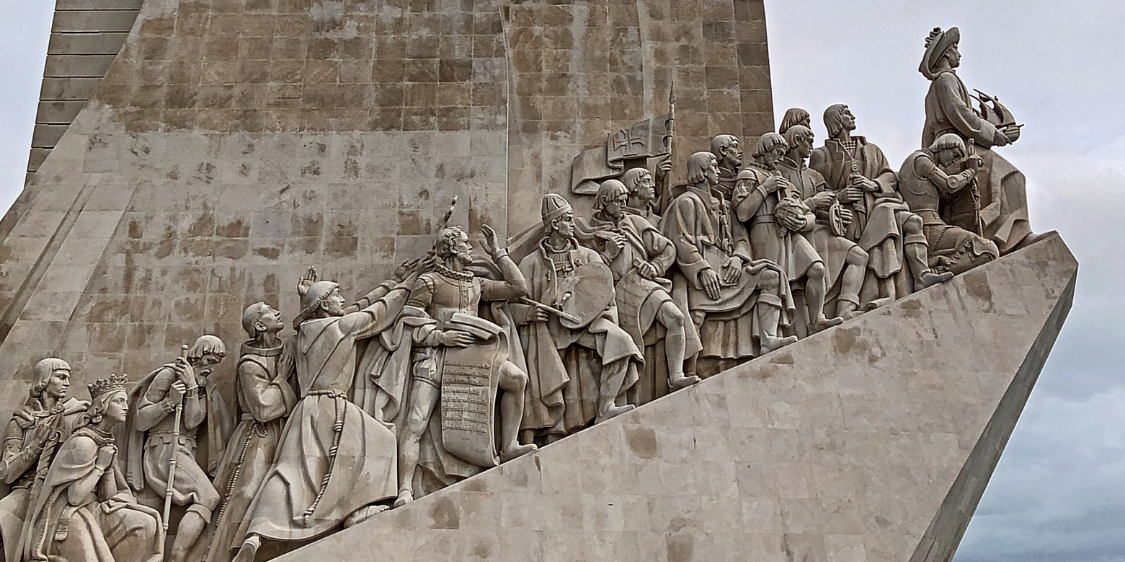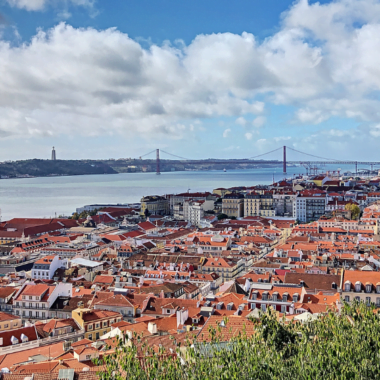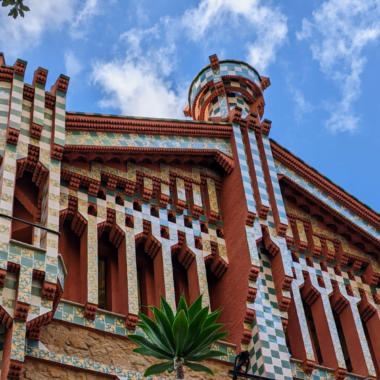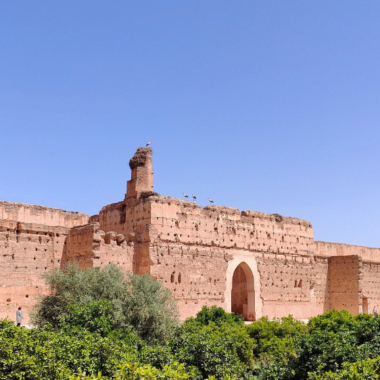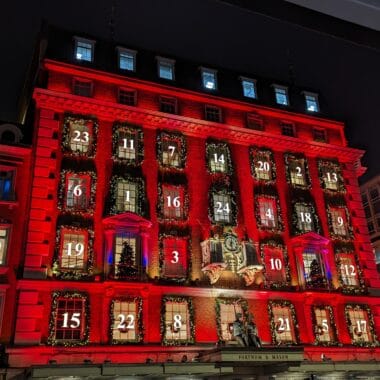Although slightly outside the city, Belém is one of Lisbon’s most popular neighbourhoods. Here, in a calmer atmosphere than the city center, you can explore several iconic landmarks from the time of the great explorers. Take a day trip along the estuary coast of the Tagus River to discover Belém…

Belém in a few words
Belém is the royal and noble neighbourhood of Lisbon. To get there – Belém is located 6 kilometers west of Lisbon – you can take tram 15, which follows the Tagus river bank and passes through the gigantic concrete pillars of the renowned 25 Abril Bridge.
Belém got its name from the Portuguese translation of “Bethlehem,” highlighting the close relationship that Portugal maintained for many centuries between the Church and the State.
But Belém is primarily known for being the starting point of numerous expeditions around the world during the 15th and 16th centuries. One famous example is Vasco de Gama’s voyage to India in 1497. This historical significance is showcased by several iconic monuments in the area, such as the Belém Tower, the Jerónimos Monastery, and the Discoveries Monument.
A one-day itinerary in Belém
Torre de Belém
Built between 1515 and 1521 by the military architect Francisco de Arruda, who also designed several fortresses in Morocco, the Belém Tower is an outstanding example of Manueline military architecture. The influence of Moorish art is evident in the delicate decorations of the arched windows and balconies, as well as the fluted domes of the watchtowers.
During age of great discoveries, the Belém Tower served both as a fortress to protect the Tagus estuary and the Hieronymites monastery, and as a starting point for numerous maritime expeditions. Originally located on a small island in the middle of the Tagus River, changes in the river’s course have now placed it on the northern bank of the river.
In 1983, the Belém Tower was declared a World Cultural Heritage site by UNESCO.
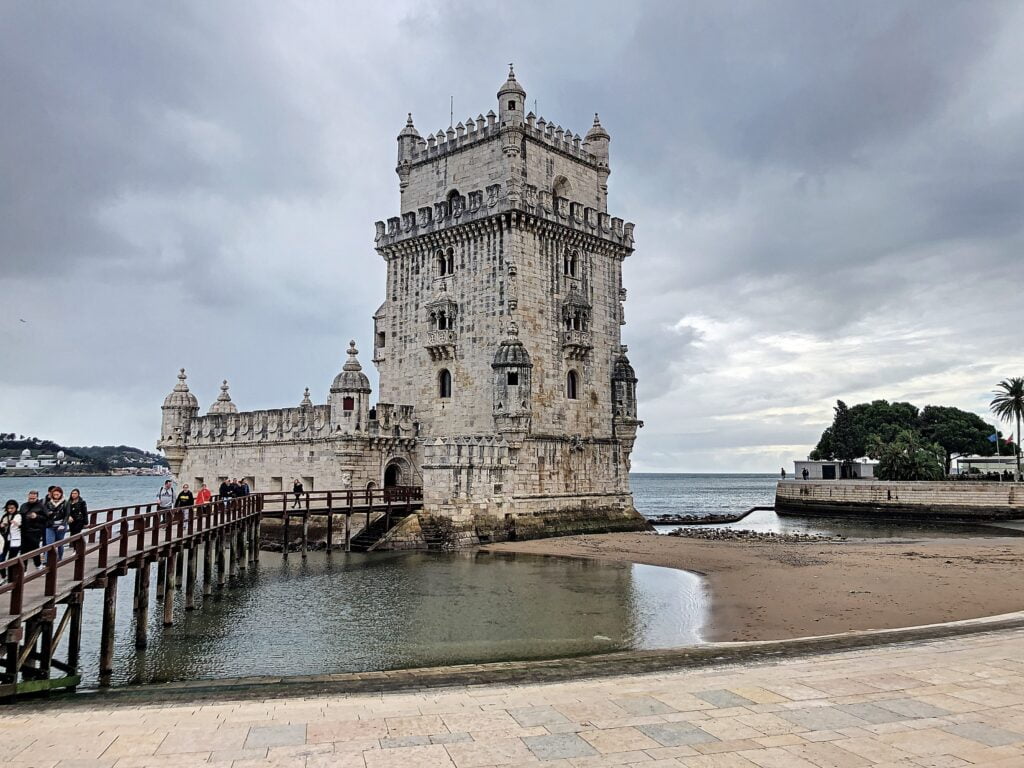
From architectural standpoint, the Belém Tower can be split into two sections – an irregular hexagonal bastion and a four-story tower – representing the bow of a caravel.
The tower stands at a height of 35 meters and has three floors and a terrace, connected by a small spiral staircase. The commander’s apartments were located on the first floor.
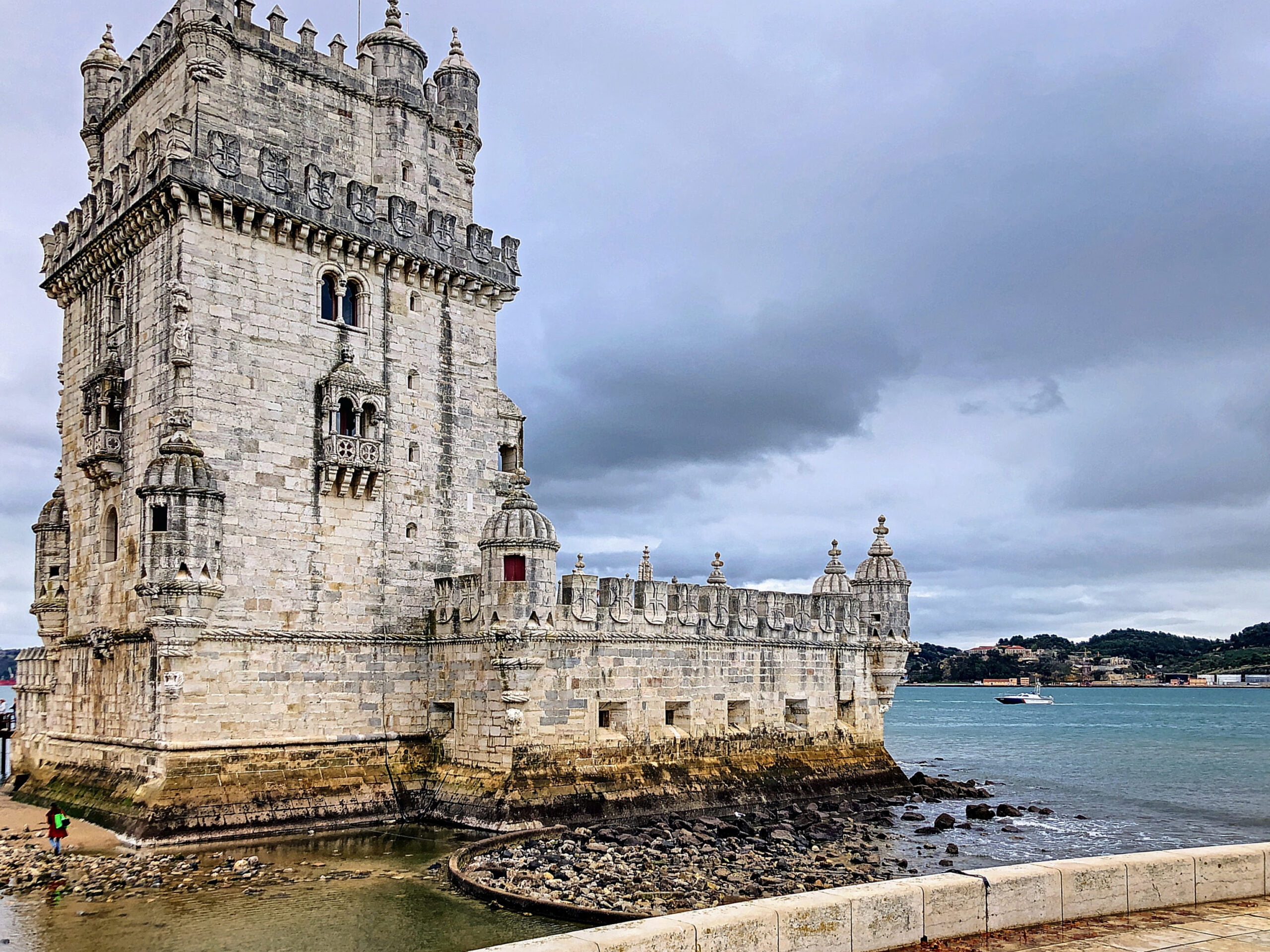
On the ground floor, there is a vaulted room with openings in the walls that are 3.5m thick. These openings were used for the installation of 17 large-caliber cannons, and there were ditches where prisoners were thrown.
On the western side of the Tower, there is a unique rhinoceros-shaped gargoyle. It serves as a reminder of the first-ever rhinoceros that arrived in Portugal from India in 1513.
- The Belém Tower is open every day from 10:00am to 5:00pm from October to April, and from 10:00am to 6:30pm from May to September.
- The Belém Tower is closed on Mondays, January 1st, Easter Sunday, May 1st, and December 25th.
- The entrance fee is 6€ for adults, and free for children under 12 years old.
We walk along the banks of the Tagus River towards the Monument to the Discoveries. We pass by the Bom Sucesso marina and the Doca de Belém, known for their lively promenades lined with bars and restaurants.
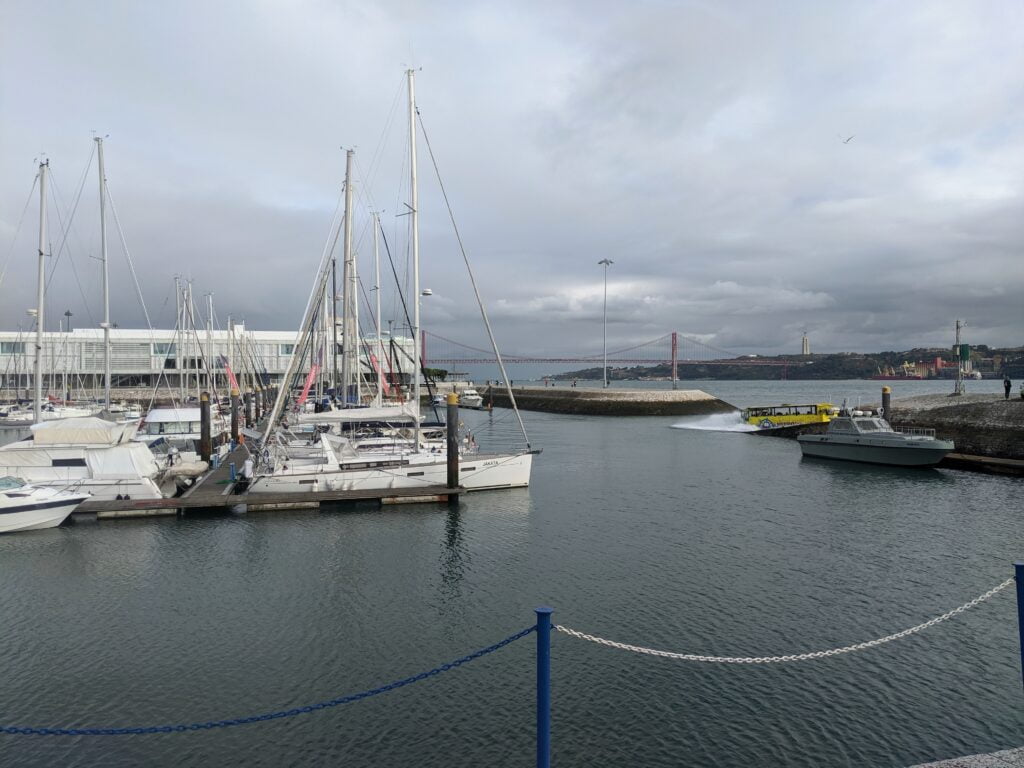
Padrão dos Descobrimentos
The Padrão dos Descobrimentos, also known as the Monument to the Discoveries, is the most famous contemporary monument in Belém. It is a vertical concrete slab, 52 meters high, 20 meters wide, and 40 meters long.
Its name refers to padrões, which were essentially “stone pillars topped with a cross or the coat of arms of Portugal”. These were used by Portuguese navigators during their expeditions to mark the locations they discovered.
Built in less than eight months for the Portuguese World Exhibition in 1940, the monument was initially constructed using perishable materials such as wood and plaster, before being demolished. It was later rebuilt in 1960 to commemorate the 500th anniversary of the death of Henry the Navigator, who, despite never setting sail himself, funded numerous expeditions during the Age of Discovery.
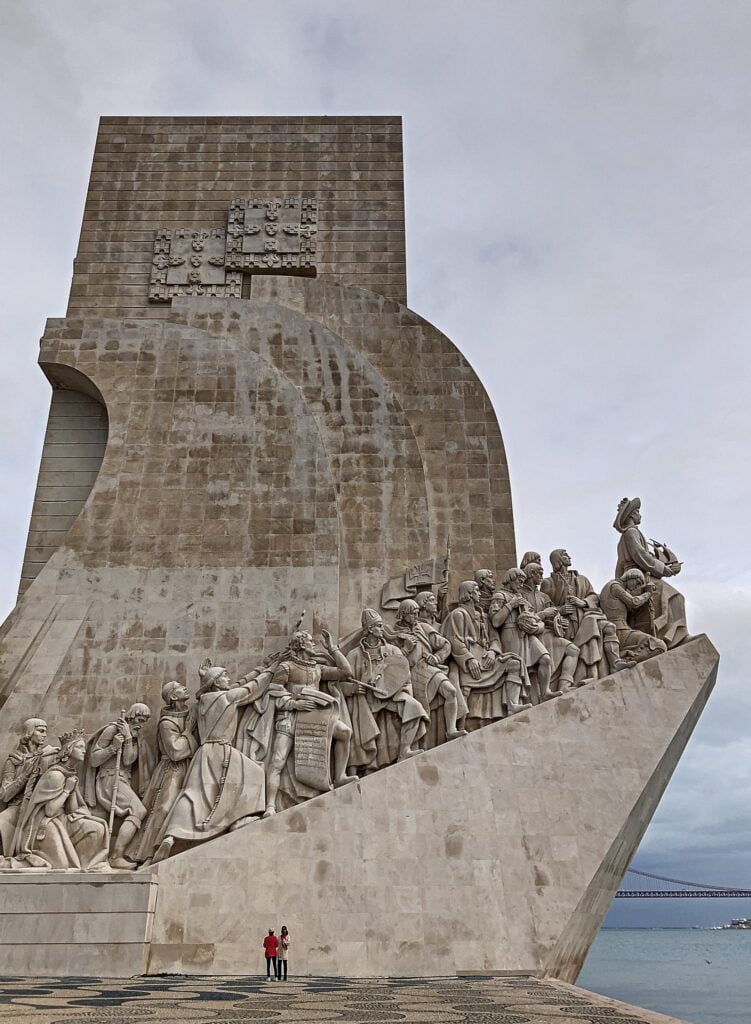
The slab is carved in the shape of the bow of a caravel, with a group of statues depicting Henry the Navigator followed by prominent explorers such as Vasco de Gama, Magellan, and Camoes.
In front of the monument, there is a 50-meter wide marble compass rose with a world map in the center, showcasing the routes of various explorers.
An elevator provides access to an observation platform at the top of the monument. Although the space is small, the view of the Tagus River and the 25th of April Bridge is breathtaking.
Helpful information
- The Padrão dos Descobrimentos is located on Av. Brasília.
- The Monument is open every day from 10:00am to 7:00pm from March to September, and from 10:00am to 6:00pm from October to February. It is closed on January 1st, May 1st, and December 25th.
- The ticket to visit the exhibition hall costs 3€, and the combined Museum + Viewpoint rate costs 6€.
Jardim da Praça do Império
We leave the banks of the Tagus to cross the Praça do Império, well-known for its extensive green spaces and peaceful atmosphere in the heart of Belém.
Situated in the center of Praça do Império, Jardim da Praça do Império is a beautiful public garden. It features trees, vibrant flower beds, and winding paths, providing stunning views of the Jeronimos Monastery. To the southeast of the garden is the National Palace of Belém, which serves as the official residence of the Portuguese president.
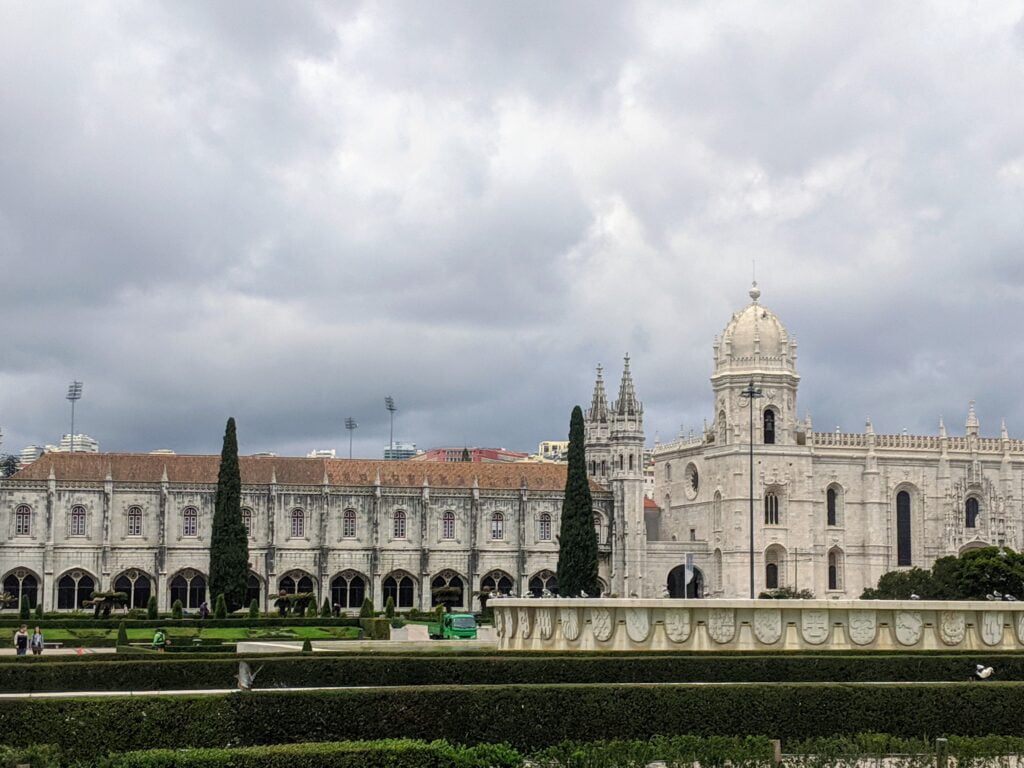
Mosteiro dos Jerónimos
The Jerónimos Monastery – or Hieronymites Monastery – is one of Lisbon’s most iconic landmarks and another remarkable example of Manueline architecture.
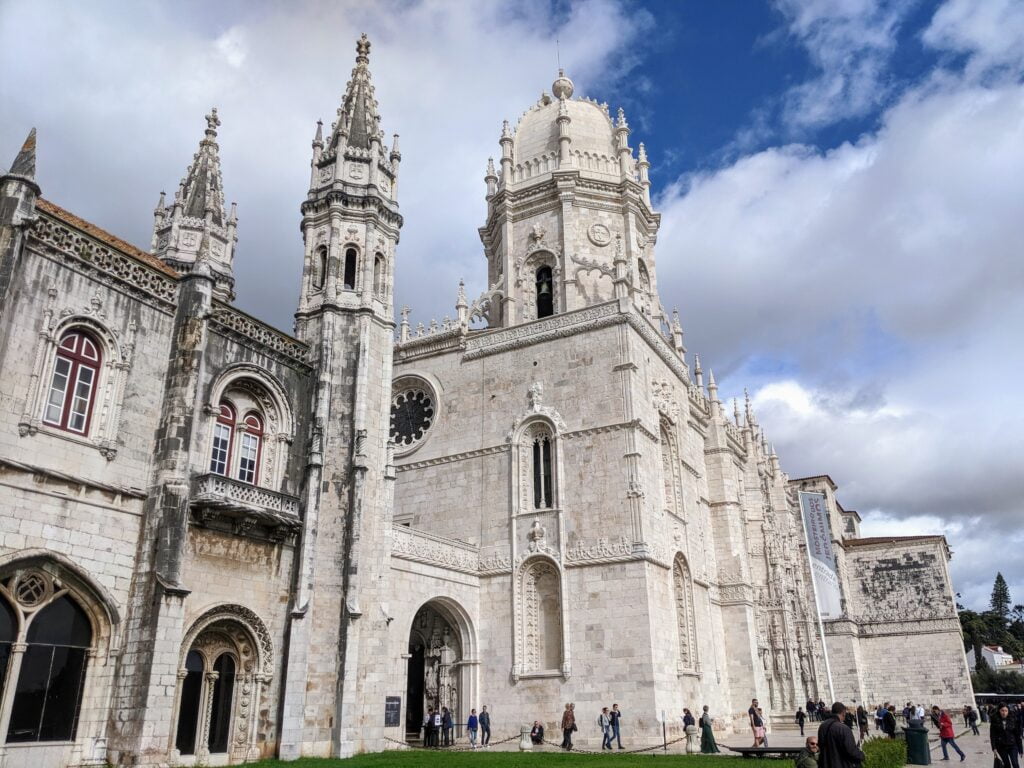
King Manuel I undertook the construction of the monastery in 1502, on the site of a hermitage dedicated to the Virgin of Bethlehem. According to official history, the monastery was built to commemorate Vasco de Gama’s return from his first voyage to India in 1499. However, welcoming the Order of the Hieronymites in Portugal – a Spanish order devoted to the funerary cult of the royal dynasty of Castile – was primarily a gesture from the sovereign towards the Catholic Monarchs, with whom he wanted to form an alliance.
The construction of the monastery was largely funded by the profits from spice trade and the wealth brought by great explorers. It stands as the most accomplished architectural work in the Manueline style.
Designated as a historic monument in 1907, the monastery was added to the UNESCO World Heritage List in 1983.
With its 55-meter long sides and intricately sculpted architecture, the monastery cloister is a masterpiece of Manueline art.
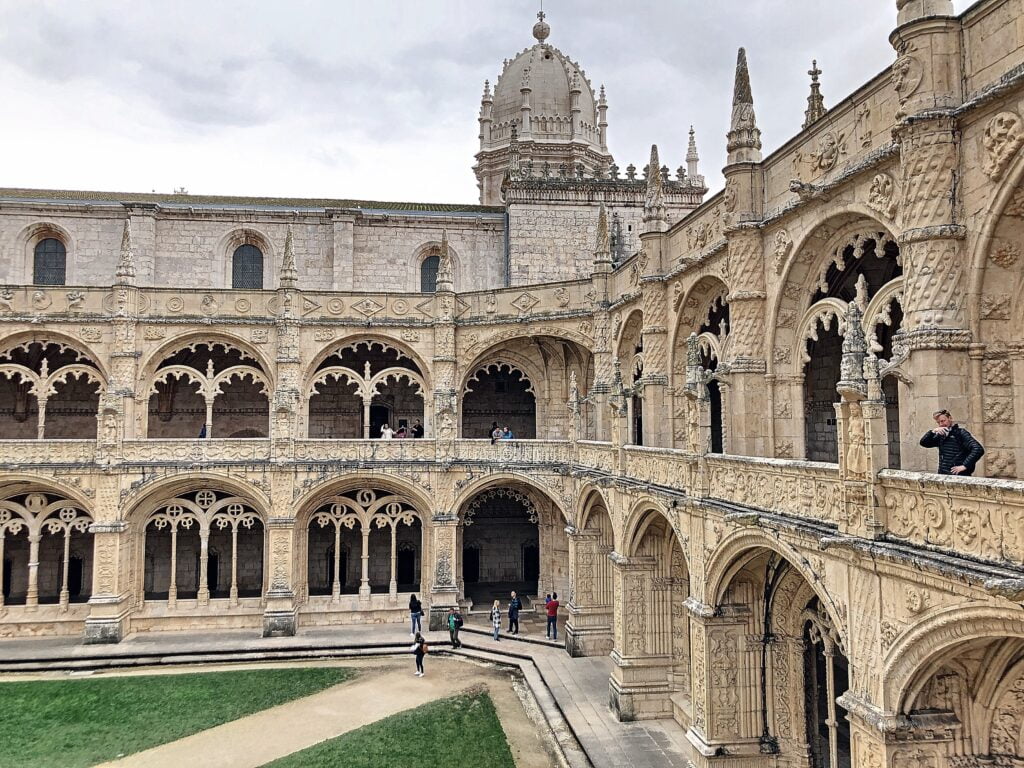
Designed by architect Diogo Boitaca, the lower floor draws inspiration from Gothic and Renaissance styles, evident in the broad arcades with delicate carved columns. In contrast, the upper floor, created by João de Castilho, exhibits a more understated aesthetic.

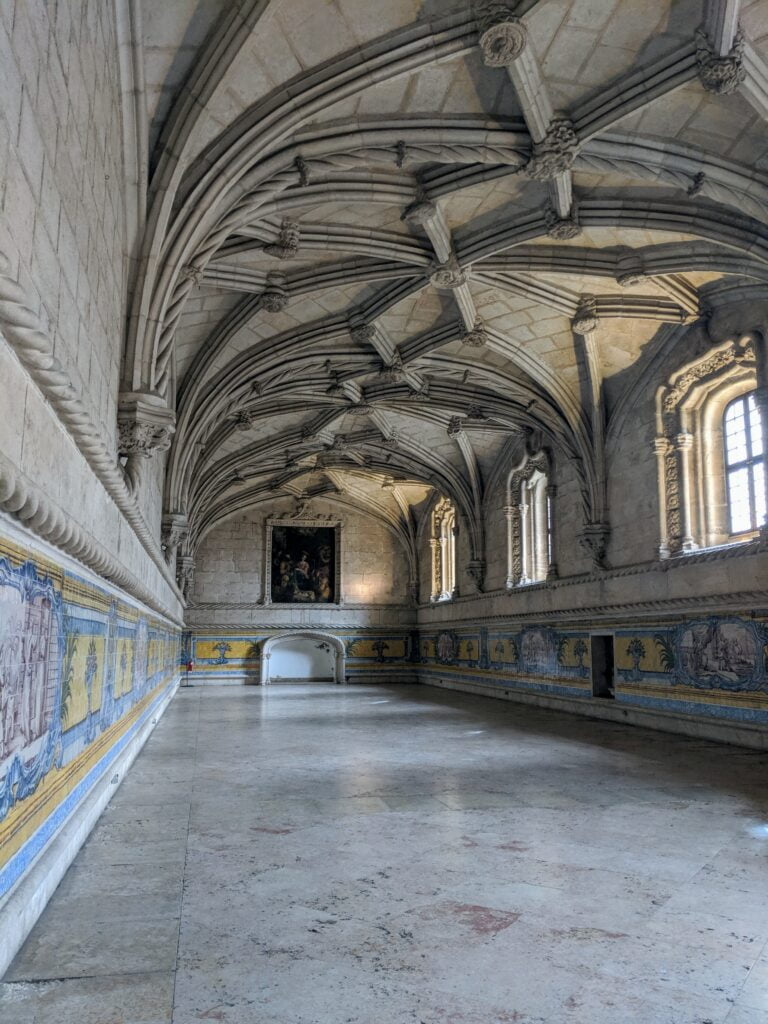
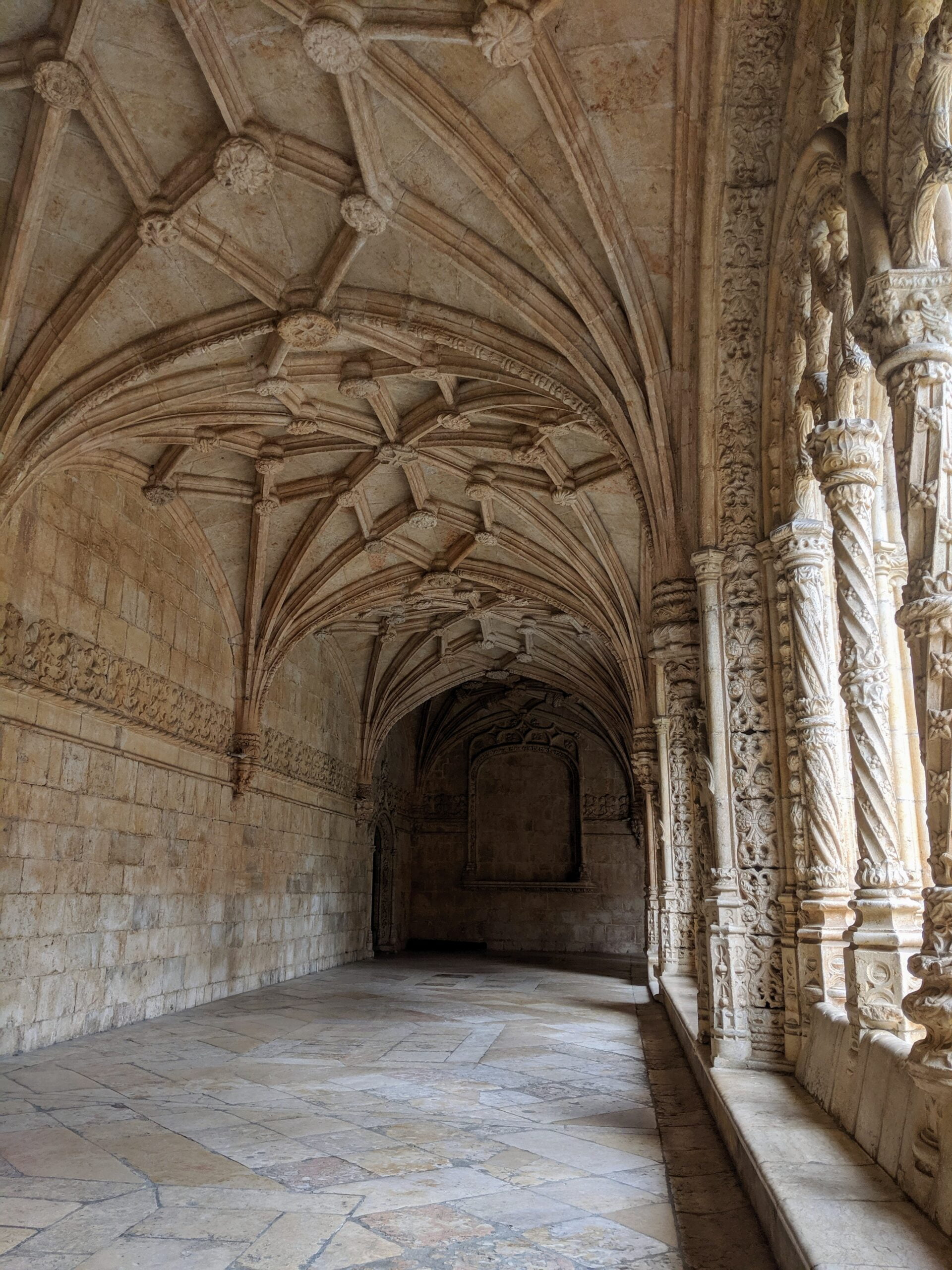
In the heart of the cloister lie two tombs of distinguished Portuguese figures: Fernando Pessoa, one of the country’s early modernist writers, and Alexandre Herculano, an author-historian, resting in the Sala do Capítulo, transformed into a national pantheon.
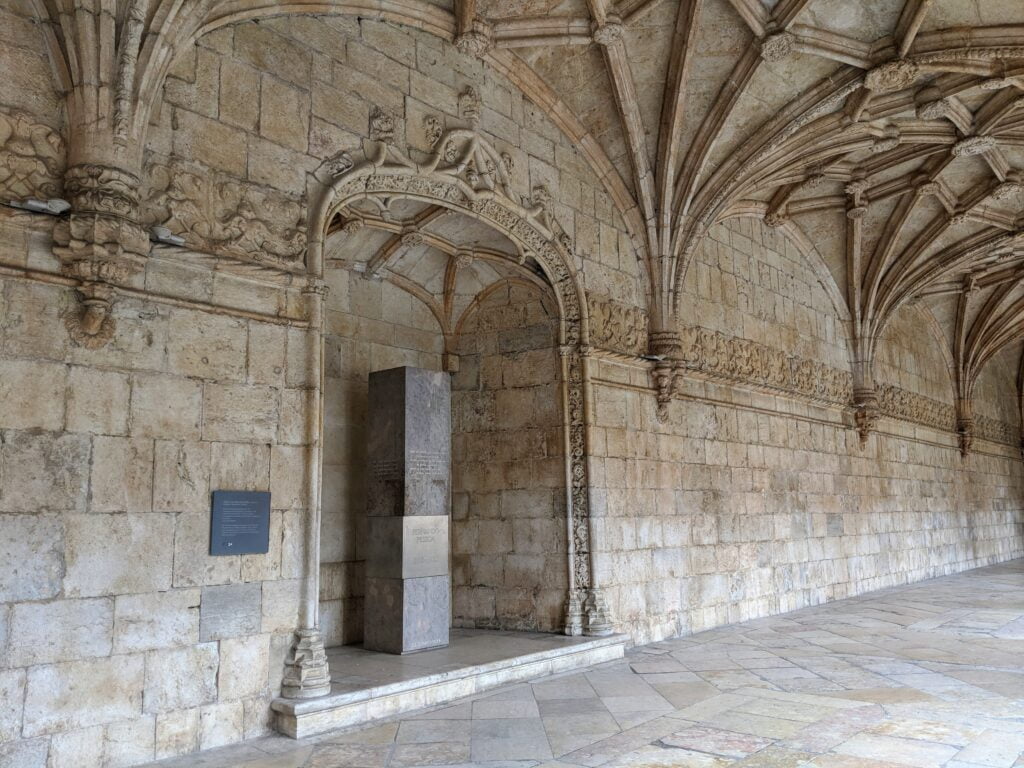
The interior of the Santa Maria church surprises with its refined and skillful vault. The pillars and vault decoration were created by João de Castilho in the pure Manueline style.
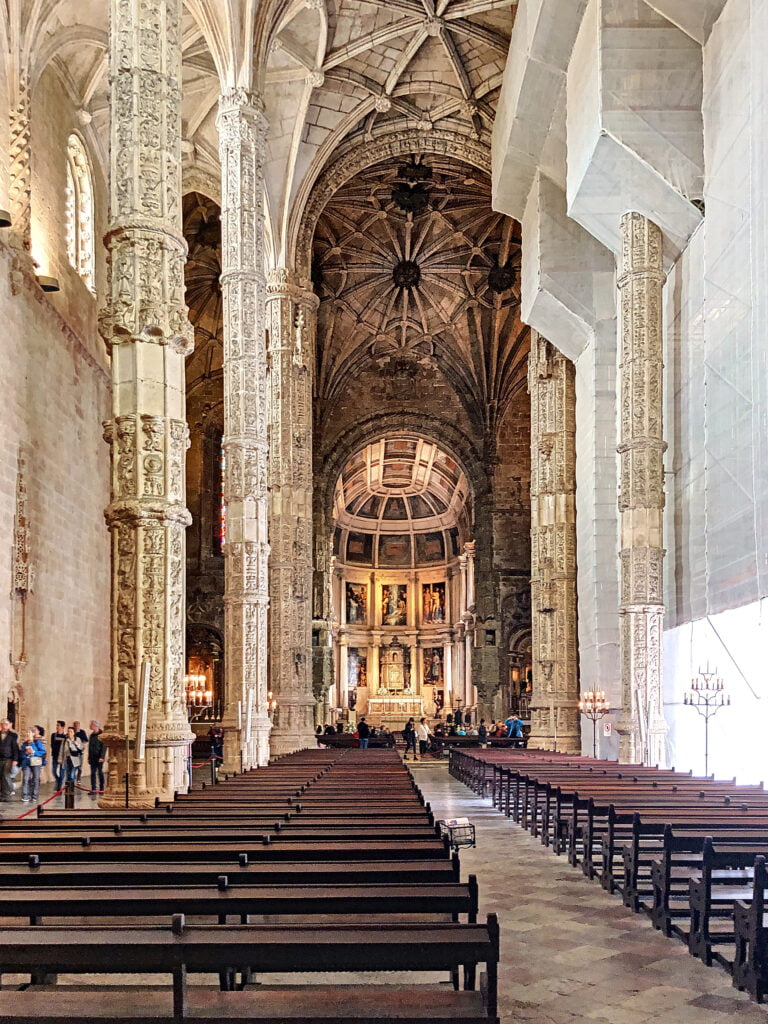

At the entrance of the church, you can see the tombs of Vasco de Gama and Luis de Camões.
Helpful information
- The Jerónimos Monastery is located in Praça do Império, Belém.
- The monastery is open from Tuesday to Sunday, 10:00am to 5:30pm from October to April, and from 10:00am to 6:30pm from May to September.
- The monastery is closed on January 1st, Easter Sunday, May 1st, and December 25th.
- While access to the Santa Maria church is free, there is a 10€ admission fee per adult for the cloister.
Pastéis de Belém
First created by the monks of the Jeronimos Monastery in the 18th century, the pastéis de Belém are now internationally renowned traditional pastries.
The pastéis de Belém are made from a crispy puff pastry, filled with a creamy mixture of eggs, sugar, milk, and vanilla. The original recipe, known by only a few people, is a well-kept secret at the factory located near the monastery.
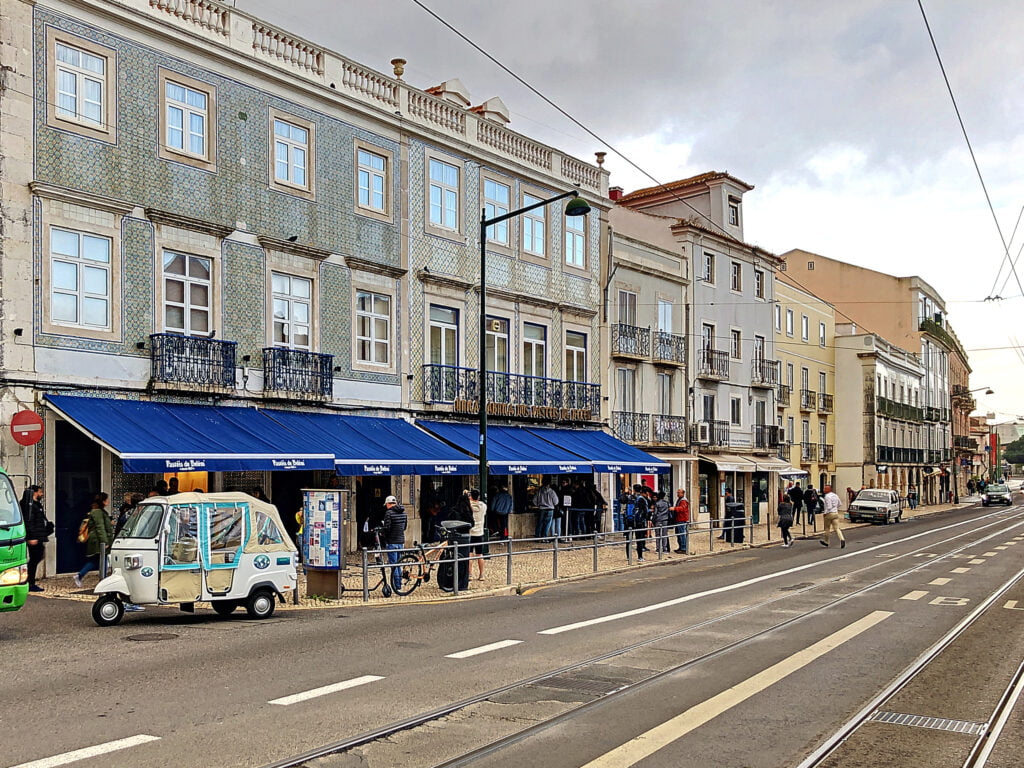
Established in 1837, the iconic Pastéis de Belém pastry shop still delights both locals and tourists with its sweet delicacies. While the line at the bakery can often be long, you have the option to enter the establishment and take a seat at a table for quicker service, all for the same price!

A great way to end this day of exploring in the footsteps of the great explorers…

